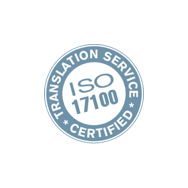Interpreter vs Translator: What’s the Difference?
The terms “interpreter” and “translator” are often used interchangeably, but they’re not the same. It’s actually uncommon to be trained as both an interpreter and translator!
In this article, we’re going to run through the key differences, as well as the similarities, between interpreters and translators.
What is an interpreter?
An interpreter is someone who translates conversations in real-time. There are different types of interpreting, such as telephone interpreting, conference interpreting, simultaneous and consecutive.
They have to have a very strong command of both languages and be quick thinking to ensure the conversation can flow as close to normal speed as possible.
They also need to take things like tone of voice and other non-verbal cues into account when translating, so that the real meaning is communicated.
What is a translator?
A translator is someone who translates written text. There are different types of translators – some focus on medical texts, some literary, some legal, and more.
They have the luxury of more time to carefully translate the text, and they can use tools like dictionaries and Computer Aided Translation.
They have time to mull over the best words to use to communicate in the target language.

What are the differences between an interpreter and a translator?
In short, the difference between an interpreter and translator is that interpreters translate conversations in real-time whereas translators work with written material and have more allotted time.
These are some specific differences between interpreters and translators:
| Interpreter | Translator | |
| Format | Verbal and in-real time. | Text-based. |
| Delivery | Done on the spot, via video call, telephone, in person, or similar. | Done some time after the source is created. Written form. |
| Nuance | They need to capture tone, inflections, and other non-verbal communications. | They translate exactly what is written but need to consider turns-of-phrases, etc that are specific to one language. |
| Accuracy | Less accurate because it’s so quick. | More accurate as more time is allotted to contemplate the text. |
| Direction | Bi-directional meaning they translate to and from the source and target language. | Single direction meaning they only translate from the source to target language. |
| Tools | No tools to aid them. | Access to many tools. |
| Payment | Paid per hour/day. | Paid per word/hour/page. |
What are the similarities between an interpreter and a translator?
Whilst they have many differences, there are some similarities between interpreters and translators:
- Qualifications: They both have to earn qualifications in order to do their jobs (read more about interpretation qualifications and how to become a translator here).
- Languages: Both work with a source language and a target language.
- Function: Both communicate meaning from the source language into the target language.
Can an interpreter be a translator?
It is possible to be both an interpreter and a translator but most people choose to specialise in just one area.
This is because they need to gain different qualifications for each career path, and so they can concentrate on perfecting their skills in one.

How do I choose an interpreter or translator?
If you need real-time translation, you need an interpreter. If you need translation of written text, you need a translator.
Once you’ve narrowed that down, you can check out our post on how to choose the best interpreter or how to choose the best translator.
Do you need our services?
Hiring a professional interpreter or translator is the way to go if you want to be sure that the messages you want to convey are communicated properly in a different language.
If you are in need of real-time translation, like in a conference, business meeting, medical appointment, or legal proceeding, you should reach out to our interpretation team.
If you need translation of written texts, whether it’s marketing materials, legal documents, books, or similar, our translation team is your port of call.
If you need a mix of both, or you’re still unsure which service suits your needs best, please get in touch with us and we will gladly assist you!





